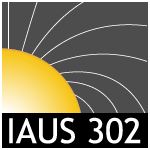We study the rotation-activity relationship for low-mass members of the h Per cluster at an age of 13 Myr. By this age, all stars have terminated their accretion phase and start their spin up to the zero-age main sequence. Rotational periods of h Per low-mass stars have been derived by Moraux et al. (2013) in the framework of the MONITOR project (Aigrain et al. 2007; Irwin et al. 2007). To constrain the activity level of h Per members we have analyzed a deep Chandra/ACIS-I observation.
In the Chandra observation we have detected 1010 X-ray sources located in the central field of h Persei. Assuming a distance of 2300 pc their X-ray luminosity ranges between 2x10^(29) and 6x10^(31) erg/s. Among the 1010 x-ray sources ~600 have as optical counterpart candidate members of the cluster with masses ranging down to 0.3 solar mass, and ~200 have also measured rotational period.
For this sample of ~200 h Per members we have compared X-ray luminosity and rotational periods for different mass ranges. We have found that solar type stars (1-1.3 solar mass) show evidence of supersaturation for short periods. This phenomenon is unobserved for lower mass stars.
|
|
|
|
Monday
26
Session 1 - Magnetized stellar formation
Chair: Corinne Charbonnel › 17:15 - 17:35 (20min) Activity and Rotation in the young cluster h Per
1 : Dip. di Fisica e Chimica, Universita' di Palermo
Piazza del Parlamento 1, 90134 Palermo, Italy -
Italy
2 : INAF - Osservatorio Astronomico di Palermo
Piazza del Parlamento 1, 90134 Palermo, Italy -
Italy
3 : Institut de Planétologie et d'Astrophysique de Grenoble
(IPAG)
-
Website
OSUG, Université Joseph Fourier - Grenoble I, INSU, CNRS : UMR5274
414, Rue de la Piscine BP 53 38041 Grenoble Cedex 9 -
France
|

 PDF version
PDF version
